#automation programming languages
Explore tagged Tumblr posts
Text
Understanding the Key Differences Between Business Process Automation (BPA) and Workflow Automation

In today's fast-paced business landscape, efficiency and productivity are key drivers of success. To achieve these goals, many organizations turn to automation. However, when it comes to streamlining operations, there's often some confusion between two commonly used terms: Business Process Automation (BPA) and Workflow Automation. While both aim to automate processes, they serve distinct purposes and have unique characteristics. In this blog post, we'll delve into the differences between BPA and Workflow Automation to help you better understand when and how to implement them in your organization. Defining BPA and Workflow Automation
Business Process Automation (BPA): Business Process Automation is a comprehensive approach to optimizing and automating a series of interconnected tasks, activities, and workflows within an organization. BPA aims to enhance efficiency, reduce human errors, and streamline complex business processes by leveraging technology.
Workflow Automation: Workflow Automation, on the other hand, is a narrower concept that focuses on automating specific sequences of tasks or steps within a process. Workflow Automation primarily deals with routing, tracking, and managing tasks and information through predefined rules and logic.
Comparing BPA and Workflow Automation:
Now that we've defined both BPA and Workflow Automation, let's compare them to highlight their differences:
1. Scope:
BPA encompasses entire business processes.
Workflow Automation targets specific tasks or steps within a process.
2. Complexity:
BPA is suitable for complex processes requiring integration and coordination across various systems.
Workflow Automation is more straightforward and suited for routine tasks.
3. Strategic vs. Tactical:
BPA aligns with an organization's strategic goals.
Workflow Automation focuses on tactical efficiency gains.
4. Data Usage:
BPA heavily relies on data analysis to optimize processes.
Workflow Automation uses data to improve task-specific activities.
5. Implementation Effort:
BPA often requires more significant IT investments and time for implementation.
Workflow Automation solutions can be implemented more swiftly and with fewer resources.
Conclusion
In summary, Business Process Automation (BPA) and Workflow Automation are two distinct approaches to automating business operations. BPA takes a holistic view, optimizing entire processes and supporting complex decision-making, while Workflow Automation focuses on automating individual tasks within a process. Understanding these differences is crucial for selecting the right automation solution to meet your organization's needs. Both BPA and Workflow Automation have their place in streamlining operations and improving efficiency, and choosing the right one depends on your specific goals and requirements.
0 notes
Text
i need dan and phil to learn the full story behind their rpftourney win i NEED them to understand how hard we fought in the semifinals i neeeeeeed them to understand how serious tumblr voter fraud is
#dnp#dan and phil#phan#someone needs to tell them that i learned selenium to try to help#and it didn't work bc it turns out the tumblr signup page CAN detect some bots but like the thought was there#then someone explain to them that selenium is a python library for automating inputs to web browsers#uhhh and then probably that python is a programming language? just in case#lou is loud
56 notes
·
View notes
Text
Top 10 ChatGPT Prompts For Software Developers
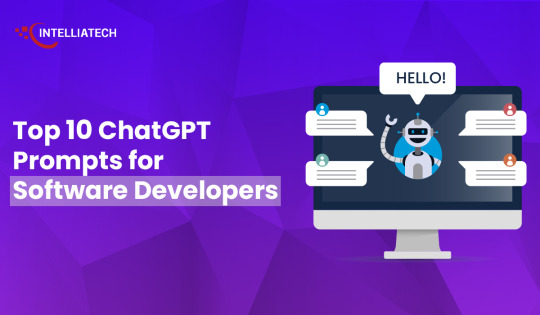
ChatGPT can do a lot more than just code creation and this blog post is going to be all about that. We have curated a list of ChatGPT prompts that will help software developers with their everyday tasks. ChatGPT can respond to questions and can compose codes making it a very helpful tool for software engineers.
While this AI tool can help developers with the entire SDLC (Software Development Lifecycle), it is important to understand how to use the prompts effectively for different needs.
Prompt engineering gives users accurate results. Since ChatGPT accepts prompts, we receive more precise answers. But a lot depends on how these prompts are formulated.
To Get The Best Out Of ChatGPT, Your Prompts Should Be:
Clear and well-defined. The more detailed your prompts, the better suggestions you will receive from ChatGPT.
Specify the functionality and programming language. Not specifying what you exactly need might not give you the desired results.
Phrase your prompts in a natural language, as if asking someone for help. This will make ChatGPT understand your problem better and give more relevant outputs.
Avoid unnecessary information and ambiguity. Keep it not only to the point but also inclusive of all important details.
Top ChatGPT Prompts For Software Developers
Let’s quickly have a look at some of the best ChatGPT prompts to assist you with various stages of your Software development lifecycle.
1. For Practicing SQL Commands;

2. For Becoming A Programming Language Interpreter;

3. For Creating Regular Expressions Since They Help In Managing, Locating, And Matching Text.

4. For Generating Architectural Diagrams For Your Software Requirements.
Prompt Examples: I want you to act as a Graphviz DOT generator, an expert to create meaningful diagrams. The diagram should have at least n nodes (I specify n in my input by writing [n], 10 being the default value) and to be an accurate and complex representation of the given input. Each node is indexed by a number to reduce the size of the output, should not include any styling, and with layout=neato, overlap=false, node [shape=rectangle] as parameters. The code should be valid, bugless and returned on a single line, without any explanation. Provide a clear and organized diagram, the relationships between the nodes have to make sense for an expert of that input. My first diagram is: “The water cycle [8]”.

5. For Solving Git Problems And Getting Guidance On Overcoming Them.
Prompt Examples: “Explain how to resolve this Git merge conflict: [conflict details].” 6. For Code generation- ChatGPT can help generate a code based on descriptions given by you. It can write pieces of codes based on the requirements given in the input. Prompt Examples: -Write a program/function to {explain functionality} in {programming language} -Create a code snippet for checking if a file exists in Python. -Create a function that merges two lists into a dictionary in JavaScript.
7. For Code Review And Debugging: ChatGPT Can Review Your Code Snippet And Also Share Bugs.
Prompt Examples: -Here’s a C# code snippet. The function is supposed to return the maximum value from the given list, but it’s not returning the expected output. Can you identify the problem? [Enter your code here] -Can you help me debug this error message from my C# program: [error message] -Help me debug this Python script that processes a list of objects and suggests possible fixes. [Enter your code here]
8. For Knowing The Coding Best Practices And Principles: It Is Very Important To Be Updated With Industry’s Best Practices In Coding. This Helps To Maintain The Codebase When The Organization Grows.
Prompt Examples: -What are some common mistakes to avoid when writing code? -What are the best practices for security testing? -Show me best practices for writing {concept or function} in {programming language}.
9. For Code Optimization: ChatGPT Can Help Optimize The Code And Enhance Its Readability And Performance To Make It Look More Efficient.
Prompt Examples: -Optimize the following {programming language} code which {explain the functioning}: {code snippet} -Suggest improvements to optimize this C# function: [code snippet] -What are some strategies for reducing memory usage and optimizing data structures?
10. For Creating Boilerplate Code: ChatGPT Can Help In Boilerplate Code Generation.
Prompt Examples: -Create a basic Java Spring Boot application boilerplate code. -Create a basic Python class boilerplate code
11. For Bug Fixes: Using ChatGPT Helps Fixing The Bugs Thus Saving A Large Chunk Of Time In Software Development And Also Increasing Productivity.
Prompt Examples: -How do I fix the following {programming language} code which {explain the functioning}? {code snippet} -Can you generate a bug report? -Find bugs in the following JavaScript code: (enter code)
12. Code Refactoring- ChatGPt Can Refactor The Code And Reduce Errors To Enhance Code Efficiency, Thus Making It Easier To Modify In The Future.
Prompt Examples –What are some techniques for refactoring code to improve code reuse and promote the use of design patterns? -I have duplicate code in my project. How can I refactor it to eliminate redundancy?
13. For Choosing Deployment Strategies- ChatGPT Can Suggest Deployment Strategies Best Suited For A Particular Project And To Ensure That It Runs Smoothly.
Prompt Examples -What are the best deployment strategies for this software project? {explain the project} -What are the best practices for version control and release management?
14. For Creating Unit Tests- ChatGPT Can Write Test Cases For You
Prompt Examples: -How does test-driven development help improve code quality? -What are some best practices for implementing test-driven development in a project? These were some prompt examples for you that we sourced on the basis of different requirements a developer can have. So whether you have to generate a code or understand a concept, ChatGPT can really make a developer’s life by doing a lot of tasks. However, it certainly comes with its own set of challenges and cannot always be completely correct. So it is advisable to cross-check the responses. Hope this helps. Visit us- Intelliatech
#ChatGPT prompts#Developers#Terminal commands#JavaScript console#API integration#SQL commands#Programming language interpreter#Regular expressions#Code debugging#Architectural diagrams#Performance optimization#Git merge conflicts#Prompt engineering#Code generation#Code refactoring#Debugging#Coding best practices#Code optimization#Code commenting#Boilerplate code#Software developers#Programming challenges#Software documentation#Workflow automation#SDLC (Software Development Lifecycle)#Project planning#Software requirements#Design patterns#Deployment strategies#Security testing
0 notes
Text
The Future is Coded in Python. Get started today with Texter!

Python is a significant-level, deciphered programming language that is generally utilized for site improvement, man-made brainpower, and information investigation, in addition to other things. If you're new to programming and you have any desire to learn Python, the initial step is to set up your current circumstance, introduce Python, and get to know the essentials of the language. learn python with tecxter.
LEARN MORE ABOUT US
#Python#python programming#programming language in python#python language#python for coding#python computer coding#programming python code#Data Science#Web Development#Machine Learning#Artificial Intelligence#Automation#Programming Community#TechTrends#Python Innovation#CodingLife#Developer Community#Python Language#Tech Updates#Learn Python#Programming Languages
0 notes
Text
Benefits of Learning Python in 2024
Introduction
Python is a popular programming language that can lead to many job opportunities in technology. It is used in web development, data analysis, artificial intelligence, and automation. In 2024, the need for Python skills is still increasing, as big companies such as Cisco, IBM, and Google are using it for their projects. If you're thinking about broadening your programming skills, this detailed guide will explore 12 reasons why learning Python in 2024 is a wise decision.
What is Python?
Python is a programming language that we use to give instructions to our computer for specific tasks. It is a high-level language that is interpreted and object-oriented. Its beginner-friendly syntax makes it a popular choice for beginners to start their programming journey. The main goal of Python is to make it easier for developers to read and understand code, while also reducing the amount of code needed.
Reasons Why You Should Learn Python
Here are the reasons why you should learn Python: it’s Web Development, Scripting, Automation, cross-platform compatibility, Open-source nature, Data Science capabilities, Machine Learning (ML), Artificial Intelligence (AI), Easy to learn, Libraries, Framework, Django Framework and Game Development.
Python is used in Web development –
Python offers a range of frameworks for web development. Django, Flask, and Pylons are some popular options known for their fast and reliable code, all written in Python. With Python, users can also engage in web scraping to extract information from different websites.
Python is used in Automation and Scripting –
Python is not only a programming language but also a scripting language. Python scripts can have functions imported as a library from other scripts. Python is capable of automating various tasks, saving time and energy.
Python is used in Cross-Platform and open source –
For over 20 years, this language has been running on different platforms and is open source. Python code works on Linux, Windows, and MacOS. Python is also known for its extensive bug-fixing and code improvement over the years, ensuring that it runs smoothly whenever it is used.
Python is used in Data Science –
Most data scientists prefer using Python for programming. Nowadays, data is crucial for various jobs like IT ops, software development, and marketing. Python gained popularity in the data world with the introduction of 'NumPy' and 'Pandas'.
Python is used in Artificial Intelligence and Machine Learning –
Python is widely used in Machine Learning to create algorithms based on statistics for computers to execute various tasks. The language has modules like Theano, Scikit-learn, TensorFlow, etc., to support machine learning. Additionally, Python is beneficial in Artificial Intelligence with libraries like Keras for neural network experiments.
Python is easy to learn –
Python is a simple language to learn. This is mainly because it is similar to English. Python's syntax has only a few rules and special cases. In Python, the emphasis is on what you want to achieve with the code, rather than the complexities of the language. Anyone can easily become proficient in Python. By practicing, beginners can create a basic game in just a few days using Python. Another appealing feature of this programming language is its efficiency and readability.
Python has many libraries and frameworks –
Python offers a wide range of libraries and frameworks to meet different needs. For instance, Django is utilized for web development, PyBrain is employed for data science, TensorFlow is used for machine learning, and so on. This guarantees that the application development process is effortless and seamless, as the libraries and frameworks can be tailored to meet specific requirements.
Django Framework –
Django is a Python web framework that makes it easy to create secure and easy-to-manage websites quickly. Developed by experts, Django handles many of the challenges of web development, allowing you to concentrate on building your app instead of starting from scratch.
Python is used in Game Development –
Developers can utilize Python to create games with the help of Pygame, enabling the development of both 2D and 3D games. Notable games like Pirates of the Caribbean and Battlefield 2 have been built using Python. Python offers a library called Pygame specifically designed for game development, making it convenient to create engaging games. With the growing prominence of the gaming industry, the utilization of Python for game development has significantly increased in recent years.
Conclusion
Learning Python in 2024 is a smart career choice because it is easy to use, has many libraries, and can be applied in various fields. Python skills are in high demand, making it a valuable asset for developers. Python is a popular programming language with many reasons behind its high demand. It offers strong community support, a wide range of libraries, and frameworks, making it a top choice for both developers and beginners. Python is used in various fields such as web development, game development, automation, as well as in technologies like AI, ML, and data analytics. Overall, the programming language is experiencing rapid growth and has a promising future ahead. Learn Python at IPCS global Palakkad for comprehensive education and training. In addition to the course curriculum, IPCS Global also provides job placement assistance, interviews, and projects, guaranteeing a 100% placement rate.
FAQs
Q. Why is it important to learn Python, and what benefits can it offer?
Studying Python has the potential to unlock many job possibilities with great potential for advancement and lucrative pay. It is applicable in a wide range of areas, including data analysis, artificial intelligence, website creation, coding, and streamlining tasks.
Q. What is the future of Python?
Python has a bright future ahead because it remains popular and widely used in different industries. Its strong community support, wide range of libraries, and flexibility make it a good fit for future technological advancements. With the emergence of new technologies and trends, Python is expected to maintain its important role in the tech industry.
Q. What are the 3 benefits of using Python?
Readability: Python is created with a syntax that is simple to read, which helps in writing and managing code more efficiently.
Extensive Libraries: Python offers a wide range of libraries and frameworks that cater to different needs. This enables developers to make use of pre-existing tools for their projects.
Versatility: Python is versatile and can be applied in various fields such as web development, scientific computing, and machine learning.
#python fullstack#ipcsglobal#ipcs global palakkad#ipcs#datascience#python course#programming languages#django#artificial intelligence#machinelearning#web development#web design#automation#scripting#2024
0 notes
Text

🔥 Ready to elevate your career with Selenium training? Join us at eMexo Technologies, the best Selenium training institute in Electronic City, Bangalore! 💼 Unlock exciting career opportunities and become a certified Selenium professional. Enroll now!
https://www.emexotechnologies.com/courses/selenium-certification-training-course/
Reach us:👇
📞+91 9513216462
🌐http://www.emexotechnologies.com
🌟 Why Choose eMexo Technologies?
🚀 Stay Ahead in Your Career
🌐 Learn in the Hub of IT, Electronic City
🤝 Network with Industry Professionals
💼 Boost Your Employability
💡 Limited Seats Available! Don't Miss Out on This Exclusive Offer!
🔥 Selenium Course Highlights:
Comprehensive Syllabus
Real-world Projects
Interactive Sessions
Placement Assistance
🏆 Best Selenium Training Institute in Electronic City, Bangalore!
Our commitment to excellence makes us the preferred choice for Selenium enthusiasts. Get ready to embrace a learning experience like never before.
📆 Enroll Now! Classes are filling up fast!
🎁 Special Offer: 30% OFF for Early Birds! 🕊️
📌 Location: #219, First Floor, Nagalaya, 3rd Cross Road, Neeladri Nagar, Electronics City Phase 1, Electronic City, Bengaluru, Karnataka 560100
#seleniumtesting#selenium course#selenium#automationtesting#automation testing#software testing#emexotechnologies#electroniccity#bangalore#course#traininginstitute#education#learning#training#careers#jobs#software#Programming#coding#programming languages
0 notes
Text
Automation Nation: How Programming Can Streamline Processes and Improve Efficiency.
In today's fast-paced world, businesses and organizations are always looking for ways to streamline processes and increase efficiency. The introduction of automation, powered by programming, has emerged as a transformative force in achieving these goals. From automating repetitive tasks to orchestrating complex workflows, programming is critical to driving productivity and innovation across industries. In this article, we'll look at automation and how programming can help organizations build an Automation Nation where efficiency reigns supreme.
The rise of automation:
In its most basic form, automation is the use of technology to complete tasks with little or no human intervention. Advances in programming languages, algorithms, and technologies have contributed to the proliferation of automation solutions over time. Automation has become ubiquitous in industries ranging from manufacturing and finance to modern sectors such as healthcare and marketing, revolutionizing the way we work.
Programming: The Engine of Automation.
Programming, or instructing computers to perform specific tasks, is central to automation. Python, Java, and JavaScript are programming languages that can be used to create automation solutions for a variety of needs. Programmers have the ability to automate almost any process imaginable, whether it's writing scripts to automate data entry, designing algorithms for predictive analytics, or creating sophisticated robotic process automation (RPA) systems.
Streamlining processes with automation:
One of the most significant advantages of automation is its ability to streamline processes, eliminate inefficiencies, and reduce human error. By automating repetitive and time-consuming tasks, businesses can free up valuable human resources to concentrate on more strategic initiatives. For example, in manufacturing, robotic automation has transformed assembly lines, allowing for faster production cycles and greater precision. Similarly, in customer service, programmed chatbots can handle routine inquiries 24 hours a day, seven days a week, increasing service efficiency and responsiveness.
Increasing Efficiency through Integration:
Automation is more than just replacing human labor with machines; it is also about orchestrating seamless workflows across multiple systems and applications. Programming allows for seamless integration of legacy systems and modern platforms, resulting in a cohesive ecosystem in which data flows freely. Programmers can bridge the gap between different software applications by using application programming interfaces (APIs) and middleware solutions, which enable real-time data exchange and synchronization. As a result, organizations can improve operational efficiency and agility by breaking down silos and encouraging collaboration.
Future Outlook:
As we look to the future, the potential for automation powered by programming is limitless. Automation solutions are becoming more intelligent and autonomous as artificial intelligence (AI) and machine learning (ML) technology advances. From self-driving cars and automated warehouses to predictive maintenance and personalized recommendations, automation's scope is expanding, reshaping industries and driving unprecedented innovation.
Conclusion:
In the Automation Nation, programming is the foundation of efficiency and productivity. Organizations can use automation to streamline processes, increase efficiency, and open up new opportunities for growth and innovation. As automation technologies advance, the role of programming will become increasingly important in shaping the future of work and driving digital transformation across industries. Organizations that want to thrive in the Automation Nation era must embrace automation and invest in programming talent.
Ready to unleash the power of programming and influence the future of automation? CACMS Institute, Amritsar's best programming institute, offers hands-on practical training. Discover why we're known as the best authorized training institute, providing expert guidance and practical skills.
Contact us at +91 8288040281 or visit CACMS to begin your journey to mastering programming and becoming a leader in Automation Nation.
#cacms institute#cacms#techskills#techeducation#study abroad program#programming training course#datascience#programming course#programming languages#Programming Institute near me#Programming Institute in Amritsar#Programming#automation#digitaltransformation#techsolutions#software
0 notes
Text
Elevate Your Python Skills in Development, Coding, and Scripting

Python, with its simplicity and versatility, stands as a powerful language capable of crafting sophisticated applications, automating tasks with finesse, and scripting ingenious solutions across various domains. Elevate Your Python Skills in Development, Coding, and Scripting is not just a guide; it's your passport to mastering the art of Python programming.
Python isn't just a language—it's a canvas on which you'll paint elegant applications, whether it's web development, game creation, data analysis, or software engineering.
Elevating Your Python Skills ventures into the realm of scripting, where you'll discover the art of automating tasks, orchestrating processes, and managing systems seamlessly. Imagine crafting scripts that save time, effort, and elevate efficiency to new heights.
However, Elevating Your Python Skills isn't just about syntax; it's about cultivating a mindset—an approach that fosters innovation, problem-solving, and a pursuit of excellence. It's about empowering you to write code that not only functions flawlessly but does so with elegance and clarity.
So, are you ready to embark on this journey? Elevate Your Python Skills in Development, Coding, and Scripting awaits, poised to unveil the secrets, unravel the mysteries, and transform you into a Python virtuoso.
Learn how here
#python programming#coding skills#software development#Scripting Mastery#Programming Languages#Python Wizardry#tech education#Developer Community#Code Learning#Programming Tips#web design#web developing company#app development#web development#Automation Techniques#Coding Mastery#Pythonic Skills
0 notes
Text
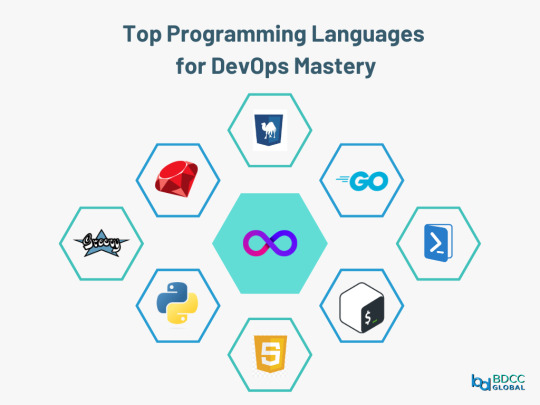
🚀 Elevate your DevOps game with the Top 10 Programming Languages for mastery! 💻✨
Unlock efficiency, automation, and seamless integration. 🌐💡 Which language fuels your DevOps journey? Share your favorites!
0 notes
Text
Java is an established programming language and an ecosystem that has dominated the software business for many years. According to TIOBE index rankings, Java was the #1 popular programming language in 2020 and the fourth best currently for bespoke software development.
The key factor for its intensive popularity is its security, which is why it is extensively used in a broad range of disciplines such as Big data processing, AI application development, Android app development, Core Java software development, and many more. It provides a large set of tools and libraries, as well as cross-platform interoperability, allowing customers to build applications of their choice.
#java development#future of java#java trends#java developer for hire#Java programming language for cloud-native development#Java frameworks for microservices architecture#Java ecosystem tools for DevOps automation#Java web development trends in 2023#Agile Java development with DevOps best practices#software development company
0 notes
Text
The Top 10 Automation Programming Languages You Need to Know

One of the key characteristics of automation programming languages is their versatility, as they can be tailored to specific applications and systems. These languages are equipped with libraries, modules, and functions that facilitate interactions with hardware, software, and data sources, making them invaluable for tasks such as data analysis, system administration, and process optimization.
0 notes
Text
In this week's episode of House of Games, we leap head-first 🤸♂️ off the rails to talk about AI 🤖, automation 🏭, programming languages 💻, backward compatibility ⏮️, culture 🌎, and more! 🚀🎙️🎊
#podcast#spotify#edutainment#game development#gamedevelopment#video games#interview#gamedev#games industry#indie games#indie dev#indie developer#tech news#gaming news#ai#chatgpt#programming#programming languages#automation#backwards compatible#culture#Spotify
0 notes
Text
CALLING ALL DOLLS, DRONES, ROBOTS AND CODING ENTHUSIASTS
Are you a robot that loves to serve? Are you a doll maid who seeks guidance in your duties? Are you some form of drone or being with no free will, open to having your actions dictated by the will of your owner? Does the idea of your empty mind being programmed like a machine appeal to you?
Are you enticed by the notion of writing code for your robotic servants? Are you a witch looking to create more intricate control glyphs? Are you an owner seeking to create automated instructions for your drones? Do you love the idea of filling an empty mind with rules and instructions to reflect your will?
INTRODUCING DRONE RESTRAINT NOTATION!
WHAT IS IT?
Drone Restraint Notation, or DRN, is a pseudo programming language created by my good friend Errant Spark, a drone with a very creative <empty space>. I helped with some of the final tweaks for the 1.0 version, but this is almost entirely Its creation.
It is a programming language that is designed in such a way that anyone without a background in programming can execute the commands like a machine, doll, drone, or programmable entity of your choice. It is also simple enough that most people without a background in programming can pick it up fairly easily, and intuitively!
Once you understand the language, you can read and execute all kinds of dynamic instructions and instruction types, in a way that makes it easy to parse in a plain-text format.
HOW DOES IT WORK?
The main documentation document will provide far more detail to this question than I ever could, but effectively it goes like this:
There are a list of eight KEYWORDS, in block capitals, that show you the type of instruction you’re executing. Then, after the KEYWORD, the instruction’s details are shown. Commands are read and executed from top to bottom by the drone, and programs can be ‘inserted’ into the drone’s memory at will (Assuming prior consent, of course)!
These KEYWORDS all have different kinds of functionality. The most basic one just has you carrying out a task. One checks if a condition is true, one provides an ongoing task you have to prioritize and maintain, one lets you create loops, etc.
The language has been designed in such a way as to minimize the amount of actual memorisation a drone has to do, and only has to read what’s right in front of them, and memorize tasks they have to accomplish/maintain. Obviously, mileage may vary depending on the memory space of the doll.
WHY SHOULD I USE IT?
For fun, I suppose! If you are someone who loves the idea of being programmed like a machine, executing only the instructions given, then this provides that! If you are a programmer who wants to program your very own doll bot, then this is a great place to get started too!
You can keep things nice and simple with a headspace that accepts basic command inputs, or you can see how deep the rabbit hole goes and import whole libraries into your headspace to carry out a full day’s maid duties, or sexual duties, or more!
Have fun executing commands, writing new code, testing it on your dolls. Have some playful fun watching as your early code files cause unintended behaviors, ironing out kinks and bugs like a real programmer until you’ve got your bots performing all sorts of dynamic tasks- or insert purposeful bugs to make your robots twitch and halt~
As with all things, never execute an instruction that you cannot/would not consent to. This is meant to be fun, and is NOT meant to be a way to circumvent normal consensual kink play. Programmers who attempt to use DRN as a way to bully people into doing what they want (Unless you’re into that sort of thing, in which case go nuts) do NOT have my endorsement, or the endorsement of Errant Spark.
NOW GO OUT THERE, AND ENJOY YOUR PROGRAMMING <3
>> Posted by XCN-PSD/I-04135
#dollcore#empty spaces#dronification#doll posting#rubber drone#robotkin#robot kin#ai kin#aikin#mind control#mind conditioning#brainwashing#robotfucking#robotfucker#robot fucker
1K notes
·
View notes
Text

Mastering Python from Tecxter: Unlock Your Coding Potential & Embark on the Path to Excellence
"Mastering Python from Tecxter" is more than just a course; it's an investment in your future. Join us and unlock your coding potential to become a Python programming master! Visit our website to learn more and start your coding journey with Tecxter!
LEARN MORE ABOUT US
#Python#python programming#programming language in python#python language#python for coding#python computer coding#programming python code#Data Science#Web Development#Machine Learning#Artificial Intelligence#Automation#Programming Community#TechTrends#Python Innovation#CodingLife#Developer Community#Python Language#Tech Updates#Learn Python#Programming Languages
0 notes
Text
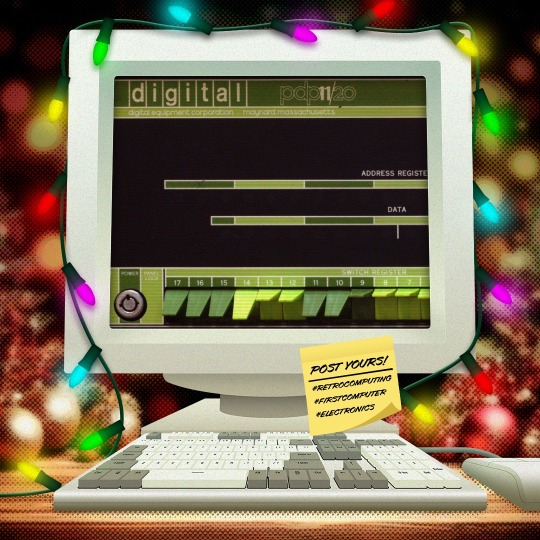
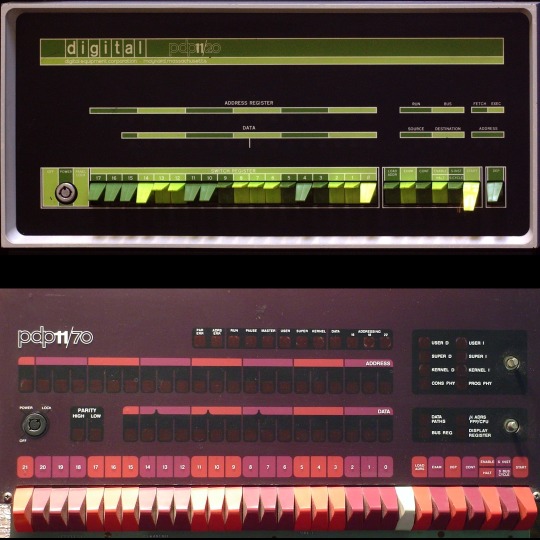

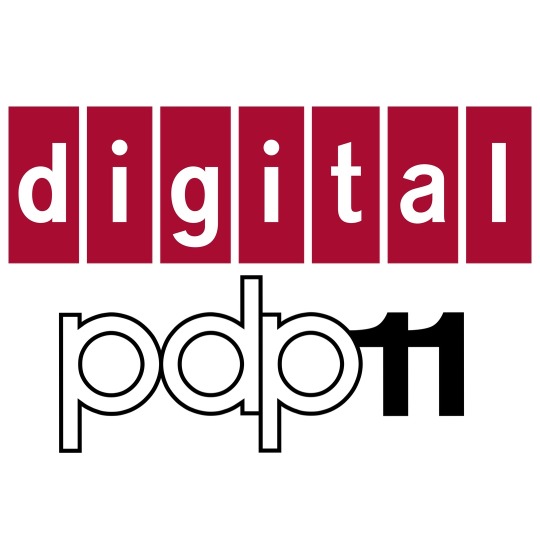

🎄���🗓️ Day 4: Retrocomputing Advent Calendar - The DEC PDP-11! 🎄💾🗓️
Released by Digital Equipment Corporation in 1970, the PDP-11 was a 16-bit minicomputer known for its orthogonal instruction set, allowing flexible and efficient programming. It introduced a Unibus architecture, which streamlined data communication and helped revolutionize computer design, making hardware design more modular and scalable. The PDP-11 was important in developing operating systems, including the early versions of UNIX. The PDP-11 was the hardware foundation for developing the C programming language and early UNIX systems. It supported multiple operating systems like RT-11, RSX-11, and UNIX, which directly shaped modern OS design principles. With over 600,000 units sold, the PDP-11 is celebrated as one of its era's most versatile and influential "minicomputers".
Check out the wikipedia page for some great history, photos (pictured here), and more -
And here's a story from Adafruit team member, Bill!
The DEC PDP-11 was the one of the first computers I ever programmed. That program was 'written' with a soldering iron.
I was an art student at the time, but spending most of my time in the engineering labs. There was a PDP-11-34 in the automation lab connected to an X-ray spectroscopy machine. Starting up the machine required toggling in a bootstrap loader via the front panel. This was a tedious process. So we ordered a diode-array boot ROM which had enough space to program 32 sixteen bit instructions.
Each instruction in the boot sequence needed to be broken down into binary (very straightforward with the PDP-11 instruction set). For each binary '1', a diode needed to be soldered into the array. The space was left empty for each '0'. 32 sixteen bit instructions was more than sufficient to load a secondary bootstrap from the floppy disk to launch the RT-11 operating system. So now it was possible to boot the system with just the push of a button.
I worked with a number DEC PDP-11/LSI-11 systems over the years. I still keep an LSI-11-23 system around for sentimental reasons.
Have first computer memories? Post’em up in the comments, or post yours on socialz’ and tag them #firstcomputer #retrocomputing – See you back here tomorrow!
#dec#pdp11#retrocomputing#adventcalendar#minicomputer#unixhistory#cprogramming#computinghistory#vintagecomputers#modulardesign#scalablehardware#digitalcorporation#engineeringlabs#programmingroots#oldschooltech#diodearray#bootstraploader#firstcomputer#retrotech#nerdlife
290 notes
·
View notes
Text
slogging through the AI discourse trenches for any semblance of nuance and idk what i expected considering how people were/still are about self-driving cars or other automated technologies - the idea that we absolutely need a human consciousness [read: laborer] present in particular jobs in order to infuse it with meaning/goodness/morality is such a baffling take. "training AI by showing it tons of pictures isn't the same as a human artist seeking inspiration, which is why an artist looking at your pictures doesn't need to pay you, but the machine should" -> ??? why is the nebulous and intangible concept of "inspiration" suddenly a factor in how a technology should operate?
there was this whole trolley problem that people used to pose about self-driving cars to use against their development that went "well what if the car sees a toddler in the middle of the road. and in order to swerve out of the way, it has to hit a teenager on the sidewalk. what would it do???"
??? what would YOU do? what would any driver do? and there's this unspoken argument (or sometimes people say it outright!) that the thing that makes either decision morally "correct" and that rejects the possibility of any "good" self-driving car is "well as a human i would feel guilty and grieve over whatever happens :(" which, again, is not really an argument at all when the actual outcome from a human driver vs program looks identical.
if genAI can produce a simple language translation that comes out identical to a human translation service, or if it produces a piece of clipart someone can throw onto a powerpoint slide, it's not a meaningful argument to say that we need human laborers in those positions because of ideas of "the human creative soul" - by all means do critique the ways that execs are cutting salaries and firing people under the assumption that genAI will "do everything" and then promptly having to hire people back when they realize they have no fucking idea what genAI can and can't do. but like. at the end of the day i do not care about - and courts do not care about - arguments about the human soul
56 notes
·
View notes